In the spring of 1017 CE, Knútr Sveinsson – known to the English as Canute – was crowned King of England by the Archbishop of Canterbury. King Canute’s rise was made possible by the chaotic breakdown of royal order in Late Anglo-Saxon England: King Ethelred ‘the Unready’ had squandered the vast wealth and martial spirit of the fledgling country, lavishing Viking invaders with huge bribes known as the ‘Danegeld’ – causing a feeding frenzy from across the Scandinavian world. King Canute’s father Sweyn Forkbeard had been onesuch Viking warlord, attracted by the scent of blood in the water, but Sweyn’s aims had been much loftier: the conquest of the English throne itself, and the creation of a North Sea Empire. But Sweyn died mysteriously, before he could secure the throne permanently, and Canute had spent his formative years locked in ceaseless struggle with the House of Wessex. Now, he had vanquished them: in the aftermath of the Battle of Assandun, Edmund Ironside had surrendered his claim to the throne before he died of his wounds, and the Anglo-Saxon Witan had followed the dead West Saxon’s wishes, proclaiming Canute as King. But King Canute would not rest on his laurels for long: in little more than a decade, the Danish King of England would weld the entirety of Scandinavia together with England in the North Sea Empire that his father had envisioned. Under Canute, England would emerge onto the European stage, at the coronation of a Holy Roman Emperor. And he would earn that most rare of epithets: Canute the Great.
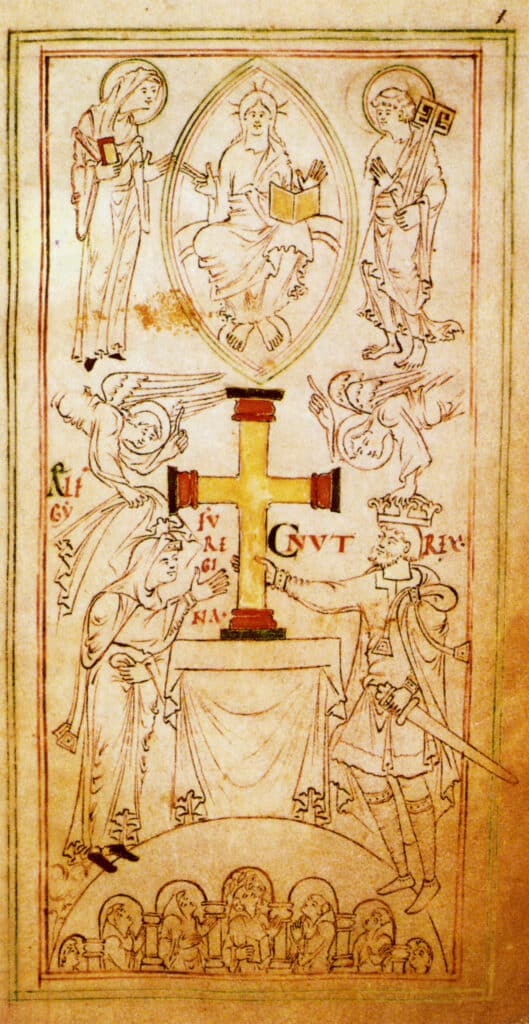
A Shaky Throne
First on King Canute’s agenda was cleaning house. Whilst his position was much more secure than that of his father Sweyn Forkbeard when he had seized the throne four years previously (the English Witan had not proclaimed Sweyn King unanimously and the recently deposed English King Ethelred was still at large in exile in Normandy), Canute certainly felt the need to shore up his rule. He began as he meant to continue: with an iron-fisted reprisal against his political enemies over the Christmas celebrations of 1017 CE. Amonsgt those singled out for execution were Northman, a knight of Mercia, Brihtric the Ealdorman of Devon – and Eadric Streona. The very same Mercian nobleman who had delivered Canute victory at the field of Assandum by withdrawing from the battle and leaving his liege-lord Edmund exposed and alone, was now killed by King Canute as an untrustworthy turncoat.

It is interesting to note that King Canute’s executions were not targeted wholesale against all of Edmund’s supporters – many of Edmund’s men retained their positions under Canute. Rather, they were aimed specifically against those who Canute perceived to have been disloyal to Edmund, and who had thus proven themselves to be untrustworthy. At the same time as these high-profile executions, Canute confirmed Northman’s brother Leofric as Ealdorman of Mercia, and the pair were apparently firmly bonded: this episode shows the importance that loyalty played in Late Anglo-Saxon culture, and how cannily King Canute was able to manipulate it to achieve his political aims.
Dynastic Affairs and a Double Marriage
At the same time, Canute demonstrated significant foresight in seeking to secure the rule of the House of Jelling in England dynastically. The last of King Ethelred’s surviving sons by his first marriage, Eadwig Ætheling, was initially reconciled to Canute’s rule, but King Canute had him executed in the bloody winter of 1017 CE – some sources indicate that he attempted to raise an unsuccessful rebellion in the peripheral sub-Kingdoms of the old West Wales. Thus, the House of Wessex’s claim to the English throne passed to old King Ethelred’s seventh son – Edward. Edward and King Ethelred’s youngest son Alfred were only children during the crisis of the 1010s, and they had been taken away into exile when it was clear the Kingdom was lost to the Danes, to the court of Robert II of Normandy – the birthplace of their mother, Emma of Normandy.

Far more need be written about Emma of Normandy, perhaps one of the most important women of the Viking Age. The first diplomatic pact between England and Normandy, signed in 1002 CE in order to curtail Viking safe harbours in Northern France, was sealed by the marriage of Emma and King Ethelred – but Emma was no mere passive observer in politics. She was an active landowner in her own right, and would contend to have her eldest son Edward recognised as King after her husband’s death in 1016 CE. But Edmund Ironside (King Ethelred’s third son by his previous marriage) was a fierce man-at-arms capable of defending the Kingdom, whilst her sons were only babes-in-arms. Sidelined by Edmund, Emma withdrew to her brother’s court at Normandy with Edward and Alfred. It was there that she received summons from King Canute that she was to be his bride.
The marriage between King Canute and Emma of Normandy can be seen as reinforcing the links between the Kings of England and the Dukes of Normandy – but now with the added strength of the common Viking heritage of both. As well, by taking old King Ethelred’s bride for himself, King Canute was clearly playing to the gallery of the English nobility: I am a continuity King, not some uncivilised Viking raider. Although the match was clearly a political one, many sources relate that Emma and Canute fell quickly in love, and remained deeply personally close for the rest of their lives.

There is, however, the small wrinkle that King Canute was already married. As we saw in our first part on the rise of Canute, during his father’s invasion of England, Canute was married to Ælfgifu of Northampton in order to mark the submission of the Northumbrian and Mercian nobility to his father Sweyn Forkbeard. By the time of Canute’s marriage to Emma of Normandy, Canute and Ælfgifu had already had two sons, Svein Knutsson (named for Canute’s father) and Harold, known as ‘Harefoot’. Yet it appears that there was little in the historical record to suggest that Emma’s marriage was ever contested or considered illegitimate – though the two women would become rivals over the dynastic succession of King Canute’s empire. Historians debate the precise nature of this arrangement: the most likely situation seems to be that Canute and Ælfgifu underwent a political ‘handfasting’ ceremony that had no weight within the Christian Church – whilst King Canute and Emma were married formally with Christian rites. There are other similar examples of an earlier wife being ‘set aside’ in the case of a political ‘handfasting’ in this period – but this case is clearly different in that Canute did not clearly set-aside Ælfgifu, and she continued to wield significant political power on his behalf throughout his reign as we shall see.
The Spoils of Conquest
Another smart policy King Canute enacted in order to secure his rule was making sure his Viking supporters had their mouths stuffed with gold. Canute, never one to deny himself someone else’s useful tools, used the same administrative methods developed by King Ethelred to extract yet another enormous Danegeld from the Kingdom of England – one source places it as high as 72,000 pounds of silver, with London contributing an extra 10,500 alone. The fighting for the throne done, most of Canute’s supporters went home, save for a small standing navy which he retained with a regular heregeld or ‘military tax’, continuing King Ethelred’s systematic war tax first instituted in 1012 CE.

Taking place in the background of the development of England from the Great Heathen Army onward is the rule of large English sub-territories under an Ealdorman – often based on the pre-existing Kingdoms that gradually unified under the House of Wessex. Now, with King Canute on the throne, the term ‘Ealdorman’ became replaced by the term ‘Earl’ – from the Old Norse ‘jarl’, meaning a chieftain either under a king or in their own right. Initially, Canute had attempted to divide the Earldoms between the English noble families and his Scandinavian supporters, but with the execution of Earl Eadric Streona of Mercia, King Canute was forced to heavily rely on the Norse. Eric of Hlathir (a former Earl of Lade, one of the line of Trondjarls) was made Earl of Northumbria, and King Canute himself retained the Earldom of Essex. King Canute’s old sparring tutor Thorkell the Tall was given East Anglia, although, like many others who had proved their disloyalty to King Ethelred, he would not retain the post for long.
The Scandinavian Quagmire
However, whilst King Canute was busy securing his reign in England, affairs in Scandinavia were necessarily slipping from his grasp without his attention. In his father’s Kingdom of Denmark, things began reasonably stable: upon Sweny’s death, King Canute’s brother Harald returned to Denmark to claim their father’s throne – but in Norway, affairs were deteriorating. The sons of Haakon the Powerful had ruled Norway in the name of King Sweyn Forkbeard as Earls of Lade since around the turn of the millennium, following the overthrow of King Olaf I of Norway at the Battle of the Svolder and the partitioning of the fledgling Norwegian state. One brother – Eric of Hlathir – accompanied Canute to England, leaving the other brother Svein Haakonsson to rule as Earl of Lade alone. But in 1015, whilst Canute was locked in struggle with King Ethelred, the son of a petty king from Vestfold, southern Norway, claimed the throne of all of Norway in the absence of firm assertion of Danish supremacy. King Olav II, as he styled himself, claimed to be the great-great-grandson of Harald Fairhair, the Norwegian King who had begun the unification and Christianization of the disparate Norwegian Viking communities in the previous century. At the Battle of the Nesjar, King Olav II met Svein Haakonsson off the coast of Norway, and unusually for a battle between Viking chieftains, both survived. However, Svein Haakonsson and his allies were soundly defeated, and Svein withdrew to Sweden to gather more supporters. But before he could launch a retaliation, he died of illness. Thus, King Olav II of Norway threw off the shackles of the House of Jelling, and began consolidating power in a reunified Norway. As if this were not bad enough, King Canute’s brother Harald died in 1018 CE, having ruled Denmark for four brief years. The tapestry of control woven by Sweyn Forkbeard looked to be unravelling, and it demanded Canute’s personal attention.
After his brother’s death, Canute could not stay away from Scandinavia any longer: if the North Sea Empire was to be realized, he had to act fast. He travelled there with his family – with him was his first son by his new marriage to Emma of Normandy, named Harthacnut (literally, ‘tough-knot’). This son had been born to the couple soon after their marriage, and Emma’s own propaganda in later years would claim that King Canute agree to legitimize their sons over those of Canute and Ælfgifu. Nevertheless, King Canute quelled opposition to his House’s rule in Denmark, leading raids south into the lands of their supporters, the Wends, in north-east Germany. In this campaign, an English nobleman of Canute’s retinue distinguished himself, leading a night-time raid against the Wends: his name was Godwin, and King Canute would elevate him and rely heavily upon him in later years.
In a surviving letter from 1019 CE, King Canute addresses the people of England as the King of both England and Denmark, and lays out his justification for assuming the thrones of both polities: to end the scourge of Viking piracy against English shores. “With God’s help I have made it so that never henceforth shall hostility reach you from there as long as you support me rightly and my life lasts”. Largely, King Canute was a man of his word: the era of concerted raiding against English shores was snuffed out. Elsewhere in the letter, he also swears to abide by ‘Edgar’s laws’, ie those of King Edgar (r. 959-975 CE), notably not those of King Ethelred, whose rule was likely regarded as blighted and unjust by many English. Leaving his brother-in-law Jarl Ulf as Earl of Denmark, King Canute returned to England as King of a burgeoning Anglo-Norse state that spanned the North Sea. Gradually, King Canute relaxed his grip on power in England, permitting the old families of England to assume some of their old responsibilities, whilst cleverly appointing new families to keep them dependent upon his rule. One of the chief beneficiaries of this policy was Godwin: occupied by affairs in Scandinavia, King Canute could not rule over Wessex directly, and so appointed the successful and brave young noble to the Earldom of Wessex, a meteoric rise.
Now, The Student Has Become The Master
A footnote of this period is the stormy relationship between King Canute and Thorkell the Tall. Later sagas describe Thorkell as the leader of the fearsome Jomsvikings of Jomsborg, an island off the coast of German Pomerania – although this status remains largely shrouded in mystery. We are reasonably sure that Thorkell spent much time in the service of King Ethelred after taking a Danegeld, though he changed his allegiance several times in the period – and as we know, King Canute had a great dislike for disloyalty, preferring the loyal men of his enemy to the disloyal who professed temporary support to him. Though the timeline of this period differs from source to source, it appears that Thorkell and Canute fell out around 1020 CE, with Thorkell being outlawed and exiled from England to Denmark. Whether this is related to the Wendish expeditions undertaken by King Canute to secure his Danish throne or not, historians debate. Regardless, King Canute is said to have launched a devastating raid on Jomsborg around this time – again, if this was part of the personal disagreement between the men, or whether it has to do with wider power dynamics, is unclear. The King of Sweden died around this time, and the accession of his pro-Norwegian son threatened to upset Danish hegemony in the region – perhaps King Canute needed a target to demonstrate his power to cow minor nobles into line. Regardless, Thorkell and King Canute were reconciled soon after – perhaps each thought the other too strong to have as an enemy – and though Thorkell was not restored to the Earldom of East Anglia, he was given the powerful Earldom of Denmark, and was entrusted with the custody of young Harthacnut. However, Thorkell abruptly disappears from the historical record after his receiving the Earldom of Denmark – Jarl Ulf was given the title shortly after Thorkell, and the records make clear that it was Ulf who retained custody of Harthacnut. It is unlikely that we will ever discover the fate of Thorkell the Tall, though it is tempting to imagine him finally retiring from a life of endless warfare to a small estate in Trondelag for a well-earned rest.
King Canute Rules The Waves
If the raid on Jomsborg was successful in pulling some of King Canute’s wavering allies firmly into line, it failed to cow the growing Norwegian-Swedish axis. Seeing that Canute was largely occupied with rule in England, they began raiding on Denmark, and in response, Jarl Ulf proclaimed the boy Harthacnut as King of Denmark. Ulf himself later claimed that this was a ruse in order to wrongfoot the Norwegian-Swedish alliance – but King Canute immediately perceived this as a threat against his rule, under the auspices of an ambitious pretender. He immediately sailed from England to deal with this rising threat. When King Canute arrived in Denmark, Jarl Ulf claimed to have been acting only with the King’s best interest at heart – and King Canute resolved to forgive the ambitious Earl and deal with the greater threat.

The Norwegians and Swedes plotted an ambush at the estuary of the Helge River in 1026 CE, constructing a huge dam made from lumber and peat which held back the mass of the river. When King Canute and Jarl Ulf’s combined navies approached the mouth of the Helge, the Swedes and Norwegians released the dam, swamping the boats of the Danes and the English, drowning a great many of them. But, wary of ambush, King Canute had sent only an advance guard into the estuary. Seeing that their ambush had failed to break the enormous Anglo-Dane fleet, the Swedes and the Norwegians decided to avoid the bloodshed of battle, and largely gave up on their attempts to undermine Danish hegemony. Yet clearly King Canute could not accept his Earl’s disloyalty – over the Christmas celebrations in 1026 CE, the King and Ulf fell to arguing over a game of chess on Christmas Eve, and the following day the King had Jarl Ulf killed inside the Trinity Church at Roskilde. (Makes your family arguments over Thanksgiving look positively mild in comparison!) In the aftermath of the overwhelming show of force, archaeological evidence such as the minting of coins indicates that King Canute asserted his dominance over the Kingdom of Sweden, seizing territory around Lake Mälaren. In effect, King Canute had faced down all of his rivals in Scandinavia, and the year 1026 CE ended with the reality of a North Sea Empire: the Kingdom of England and Denmark in the personal possession of King Canute, with the Kingdoms of Norway and Sweden under hegemonic influence of the Anglo-Danes.
King Canute In Rome
Having dominated Scandinavia, and having dealt handily with the internal affairs of England, King Canute had a degree of freedom to pursue wider aims. In the year 1027 CE, King Canute undertook what is seen by many historians as the crowning moment of his reign – his journey to Rome for the coronation of Holy Roman Emperor Conrad II. King of the Germans Conrad had undertaken a long campaign to seed his Salian dynasty amid the crisis of Ottonian power in the Holy Roman Empire, and his invasion of Italy ended with the Italian nobility acceding (albeit largely at sword-point) to his coronation as Holy Roman Emperor. As was customary, the crowned heads of Europe were invited – and unusually, King Canute accepted. Conrad’s coronation provided the perfect opportunity to achieve a basketful of aims for King Canute – he could display himself as a Christian king, securing the eternal souls of his people in Europe’s most holy city, as well as seeing to more mundane matters such as the expense of appointing English bishops, and settling an ecumenical dispute about whether the English or German churches had ultimate responsibility for the souls of his Danish subjects.
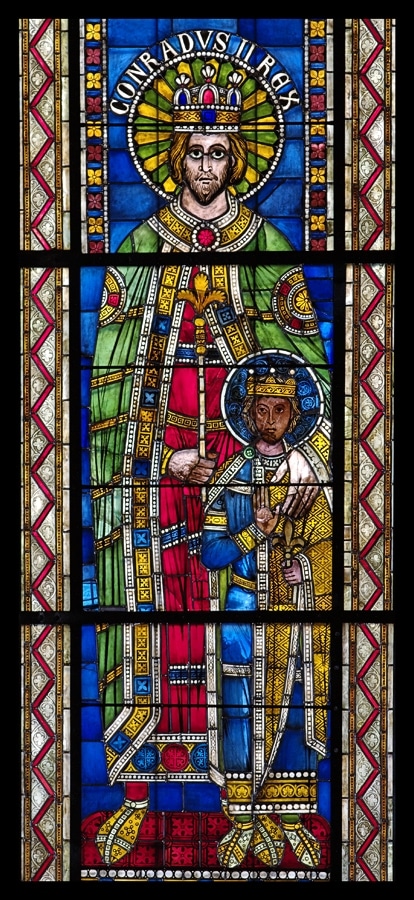
By all accounts, King Canute’s presence in the city was a roaring success. Canute and Conrad, being roughly the same age and both highly intelligent leaders, became as close as brothers, and Conrad ensured that King Canute and King Rudolf III of Burgundy walked as equals at the Emperor’s side during his coronation procession. The symbology of this meeting was enormous: in centuries past, the Danes had constructed a huge network of fortifications across the base of the Jutland peninsula known as the Danevirke to defend from the expansionist North German Franks. Now, that old enmity was laid to rest by two Christian rulers – and to seal their friendship, Emperor Conrad and King Canute agreed a marriage pact: Conrad’s young son Henry (future Holy Roman Emperor Henry III) would marry Canute’s daughter by Emma of Normandy, Gunhilda, when they were both of age. As well, the Emperor gave Canute lands in German Schleswig-Holstein as a token of their ended enmity. As King Canute made his way back toward Denmark and thence onward to England, he wrote a second letter to his people, mirroring the format of his letter of 1016 CE. In it, he speaks of his success in securing safer and cheaper pilgrimage routes to Rome, and for the first time he lays out his full title: “King of all England and Denmark and the Norwegians and of some of the Swedes”. Where before the North Sea Empire was but a wild dream of Sweyn Forkbeard, or a distant ambition of the young Canute, now, in his mid-30s, King Canute could say that he had forged his father’s dream into reality.
King of Norway
But King Canute’s work was not complete. Whilst he may now be claiming a grand royal title which spanned the North Sea Empire, his holdings in Scandinavia were far from secure. Elsewhere in his letter of 1027 CE, he reassures his people that he will secure a lasting peace in Scandinavia – and that was first on his agenda upon his return from Rome. He laid the groundwork carefully: in Norway, he began bribing King Olaf II’s bannermen with gold and silver, weakening his support. In Sweden, it seems that he tightened his influence, taking the city of Sigtuna. Finally, King Canute sailed for Norway to end King Olaf II’s rebellion for good. Most of Olaf’s bannermen deserted to the better-paying English King, and Olaf fled eastward into exile in the Kievan Rus’. Olaf would not give up on the throne, however, and would attempt to reconquer Norway in 1030 CE – but he would be killed by his own kinsmen at the Battle of Stiklestad. (Olaf’s half-brother, Harald Sigurdsson, would accompany him on his attempted reconquest – but Harald would survive the disaster at Stiklestad and escape into exile in the Kievan Rus’ and Byzantium. He would later conquer the throne for himself, and become the infamous Harald ‘Hardrada’). But for now the uncontested ruler, Canute was formally crowned as King of Norway.

Canute’s first choice for the management of the Kingdom of Norway would have been the Trondejarls – his kinsmen who had ruled Norway in the name of his father Sweyn Forkbeard. But by the late 1020s CE, the ravages of the violently short lives of the Vikings had stripped King Canute of this vital support: Svein Haakonsson had died in Sweden after the Battle of Nesjar; Eric of Hlathir likely died in the mid-1020s CE. However, Eric’s son Haakon still lived: he had fled to England from Norway after the rise of King Olaf II, and had been serving King Canute as Earl of Worcester – he was the only remaining of the Trondejarls’ family, and so he was a critical lynchpin capable of commanding the loyalty of the Norwegian chieftains and holding King Canute’s empire together. But tragedy struck: soon after being elevated to Earl of Lade (ie. King Canute’s sub-king in Norway), Haakon was shipwrecked upon Pentland Firth, between the Orkney Islands and mainland Scotland. Thus, with the extinction of the line of the Trondejarls, King Canute had little choice but to rule directly. He left his first wife Ælfgifu of Northampton and his young son Svein Knutsson as regent in his name – but the Norwegian sagas record ‘Ælfgifu’s Time’ as one of injustice and high taxes. How far this reflects a reality of mismanagement is hard to judge, given that the sagas were recorded many centuries later by Christian misogynists – but the success of King Olaf II’s son Magnus ‘the Good’ in expelling the Knýtlinga (the ‘House of Canute’) in 1035 CE might give us some indication of truth.
King of the North Sea
So, by the dawn of the 1030s, King Canute had indeed constructed a North Sea Empire. He had seized the English throne in his mid-20s, and after his brother’s death he has assumed the throne of Denmark in his own right. After the Battle of the Helge River, he had become the pre-eminent power in Scandinavia, and he had brought the glory of the North Sea Empire to Rome at the coronation of Holy Roman Emperor Conrad II. Finally, in the following years he had claimed the Norwegian throne for himself, and asserted overlordship over Sweden. This monumental feat is doubtless due in no small part to the prodigious personal resources of Canute himself: intolerant of disloyalty, brutal with his enemies, but capable of exploiting diplomatic opportunities and rewarding those who served him well.
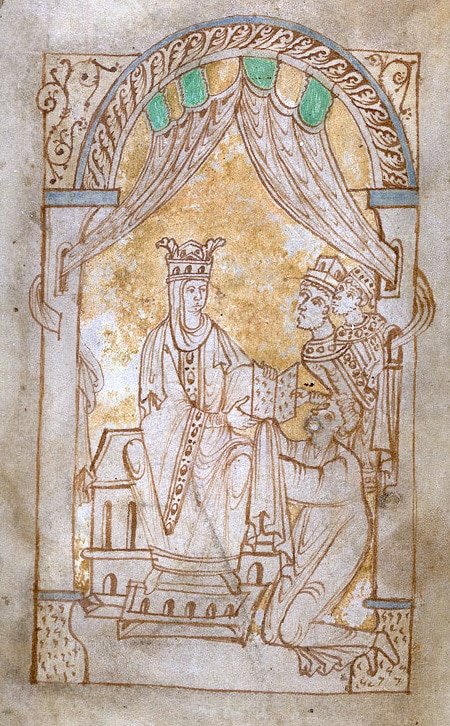
But at the same time, King Canute’s North Sea Empire was significantly dependent on him personally. His taking of two wives – though it did not raise eyebrows in his time – left a confused succession: Svein Knutsson ruled in Norway with his mother, King Canute’s first wife Ælfgifu of Northampton – and their second son Harold Harefoot was likely resident there too. Emma of Normandy, King Canute’s second wife, ruled as regent in Denmark with their son Harthacnut. And besides them, there were Emma’s other children, Alfred and Edward, by old King Elthelred of England. King Canute, in traditional Viking style, does not seem to have made firm plans for an orderly succession of power.We are left with a confused picture – there is some highly partisan literature produced by the camp of Emma of Normandy, such as the Encomium Emmae Reginae, written in the early 1040s CE, which strongly asserts that Canute ‘set-aside’ his first wife Ælfgifu, making only Emma’s son Harthacnut the legitimate heir (although, interestingly, it also refers to Alfred and Edward as Canute’s sons –laying the groundwork for the resurgence of the House of Wessex). Amidst the sprawling dynastic politics of the North Sea Empire were the English nobility – chief amongst whom was Godwin. We last saw Godwin as a young noble bravely attacking the Wends in King Canute’s campaigns to secure his Kingdom of Denmark, and by the 1030s, he had become the most powerful magnate in England due to his position as Earl of Wessex.
The Legend of the Tide
The last five years of King Canute’s reign were comparatively quiet. King Canute had achieved a staggering amount in little more than a decade, and so one is left with the impression of a candle which had burnt very bright, but quickly. One legend – which for British people is almost certainly the first touchstone when King Canute is mentioned – is the ‘legend of the tide’. In most modern retellings, the story is mis-stated as one of extreme megalomania: ‘King Canute believed that he was so powerful that he could order the tide to turn – and so he ordered his servants to set him down in his throne on the beach. But the tide would not turn at Canute’s orders, and so he fled with soggy feet.’ Indeed, even the name ‘King Canute’ has become a by-word for someone trying to stem an impossible tide.

The story is not mentioned by any of our contemporary sources, and so probably never actually happened – but it does have a long history as a tale told about King Canute by later writers. The earliest known example of the story is to be found in Henry of Huntingdon’s Chronicles, dating to the second quarter of the 12th century (about a century after King Canute’s death). In the earliest tellings, it seems that the tale is meant to illustrate not Canute’s foolhardiness or arrogance, but rather a devout King’s holy rebuke to his courtiers. In Huntingdon’s telling, Canute laps back from the heedlessly advancing tide, and says to his courtiers, ‘Let all men know how empty and worthless is the power of kings, for there is none worthy of the name, but He whom heaven, earth, and sea obey by eternal laws.’ – ie, even the mightiest King (of which he is one) is powerless compared to God. After this event, says Huntingdon, King Canute hung up his royal crown upon a crucifix, and never wore it again as a mark of penance. This picture of King Canute as a deeply devout and Christian ruler seems to have a lot of support in its favour: for example, King Canute is known to have invested heavily in repairing the damage done by (pagan) Viking raiders to monastic communities in England, as well as giving some high-profile religious gifts abroad, such as the golden book given to William the Great of Aquitaine. Such clever religious politics might well be why the Church – the recorders of official records, always talk of King Canute is such glowing terms.
The End of an Empire
And yet, like the proverbial tide, King Canute could not outpace his own mortality. Canute died in November 1035 CE, apparently of natural causes, at the age of about 45. This comparatively early death (even in the Medieval period) exists in distinction to the scale of his achievements. Sadly, King Canute lived long enough to begin to see the cracks in his North Sea Empire begin to crumble. Earlier in that year, the Norwegian pretender Magnus the Good, son of King Olaf II, crossed into Norway, capitalizing on Ælfgifu and Svein Knutsson’s deeply unpopular regime there. Ælfgifu, Svein and Harold Harefoot sought refuge in Denmark with Harthacnut in Denmark. Sending word to England asking for aid, the three brothers were met with the news that their father King Canute had passed away. And so, this is where the tale of King Canute must end: with three grieving half-brothers, two queens and a crumbling North Sea Empire which would not survive its maker.
It’s a fun counter-factual to ask, what if the North Sea Empire had survived? What if King Canute had put in place a robust succession plan, which was capable of keeping all of his sons satisfied and preserving the integration of Scandinavia and England? There is little doubt that England in particular had benefited enormously from its dominance of the Viking sea-lanes, and had recovered much of the wealth and prestige which King Ethelred had squandered. Would the shipwrecked Haakon Eriksson, the last of the line of the Earls of Lade, been able to manage Norway in such a way that Magnus the Good would have found no support amongst those disgruntled with ‘Ælfgifu’s Time’? Would such a state have been strong enough to counterbalance the rising force of the Normans on the Continent? Would the seeds of alliance and dynastic union between the Holy Roman Emperors and the North Sea Empire sown by King Canute have borne fruit? What would modern English sound like with more influence from Old Norse and less from Norman French? Modern Europe might have developed in a radically different direction, where it not for King Canute’s apparent exhaustion, the mismanagement of Norway, and the crisis which befell his realm in his final year.

 Historical Swords
Historical Swords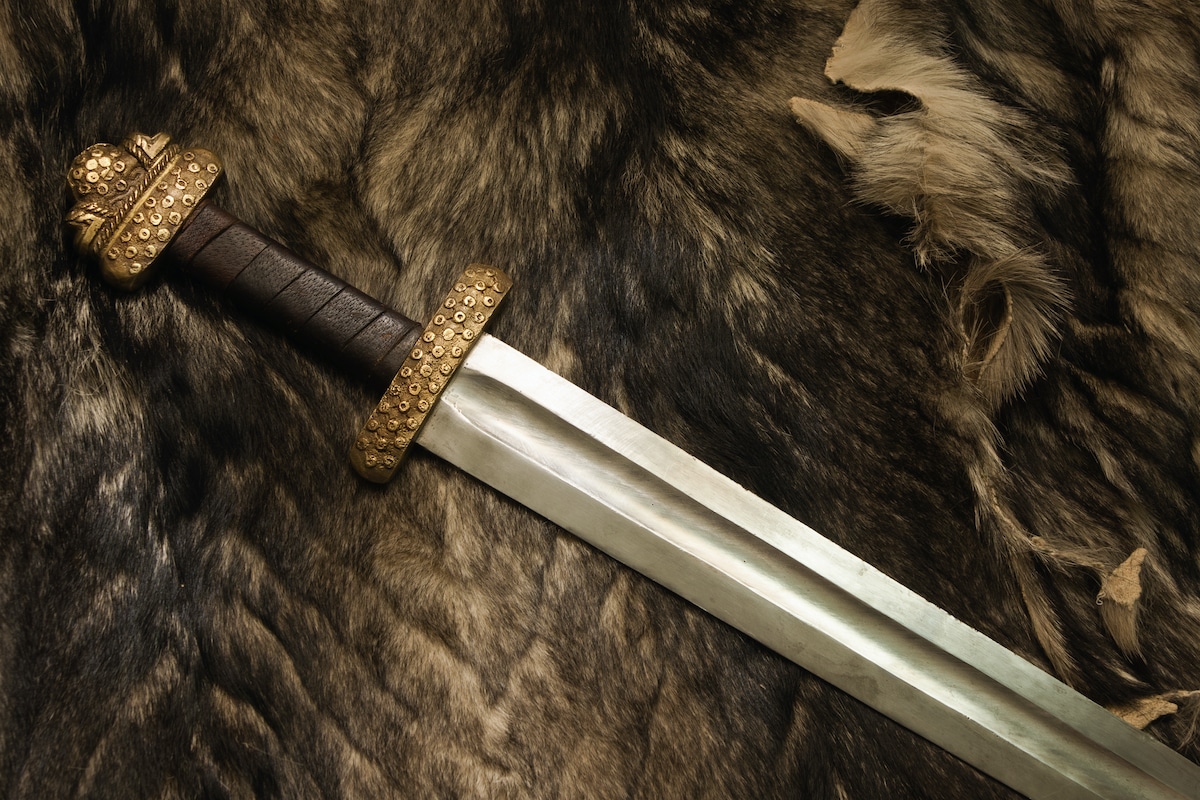 Norse & Viking Swords
Norse & Viking Swords Templar Swords
Templar Swords Claymore Swords
Claymore Swords Fantasy Swords
Fantasy Swords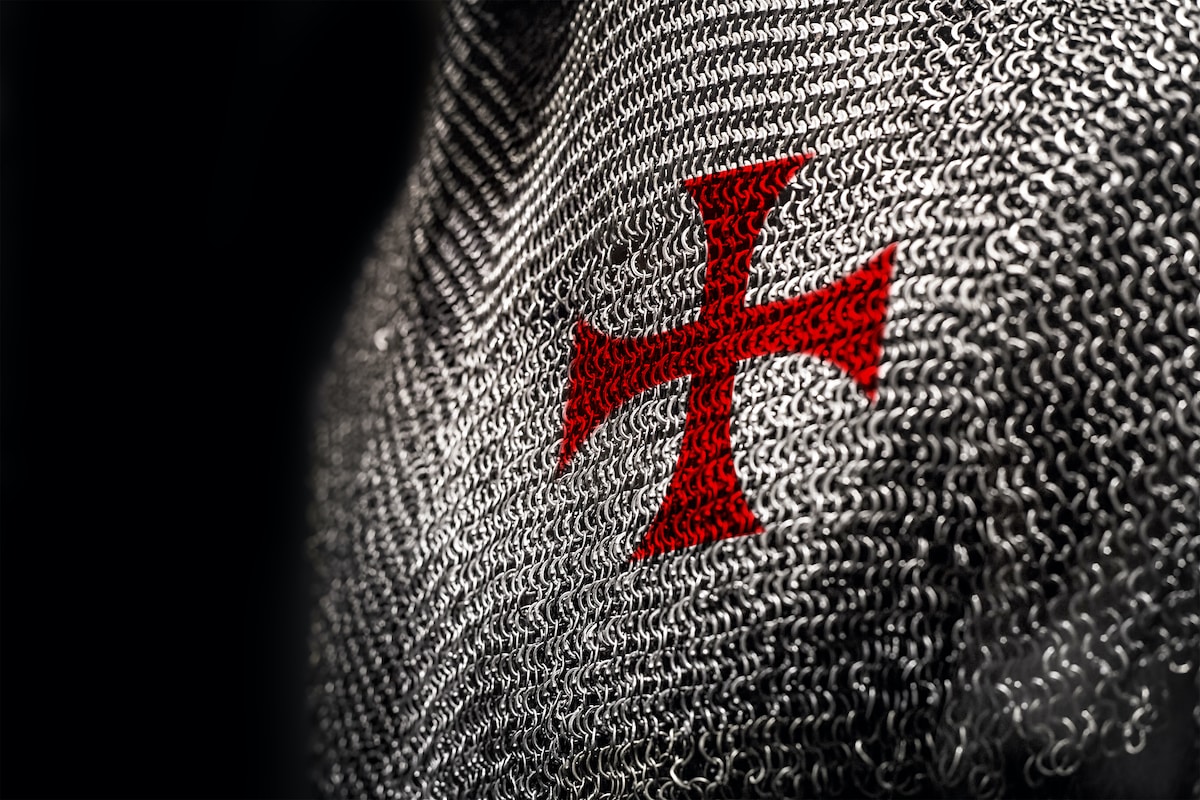 Chainmail
Chainmail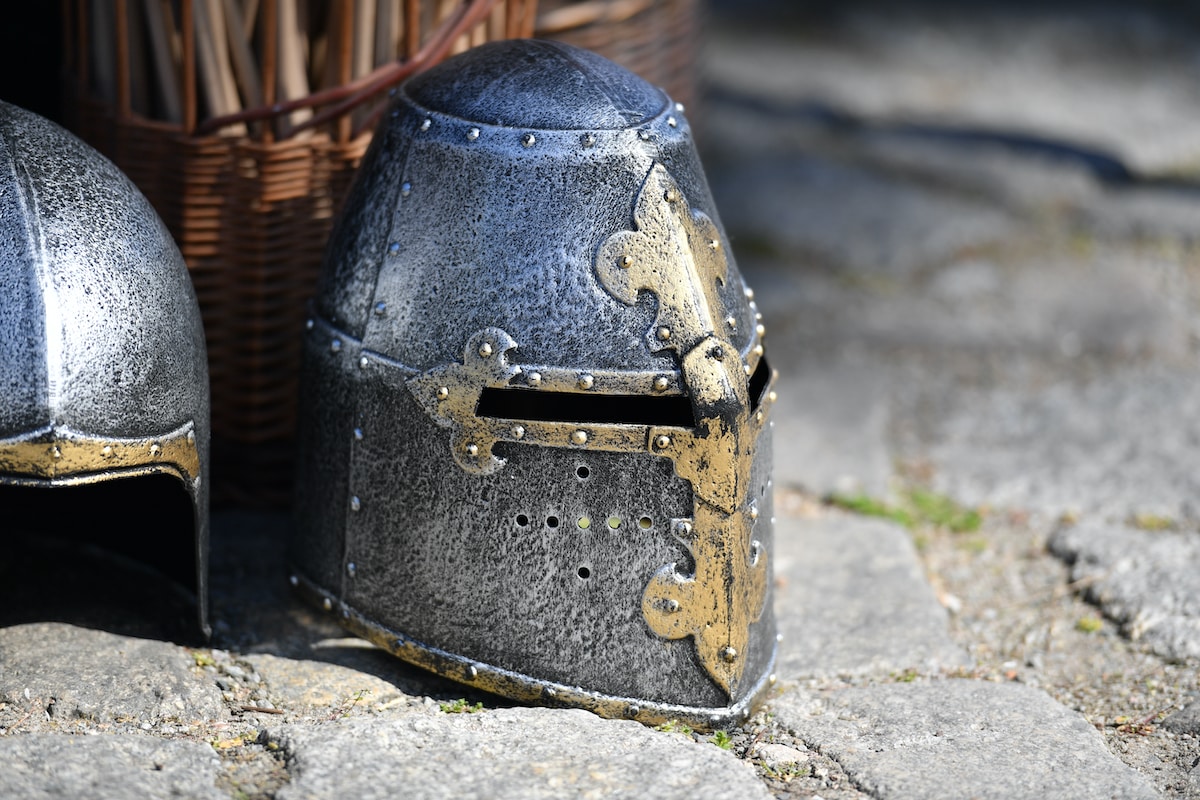 Helmets
Helmets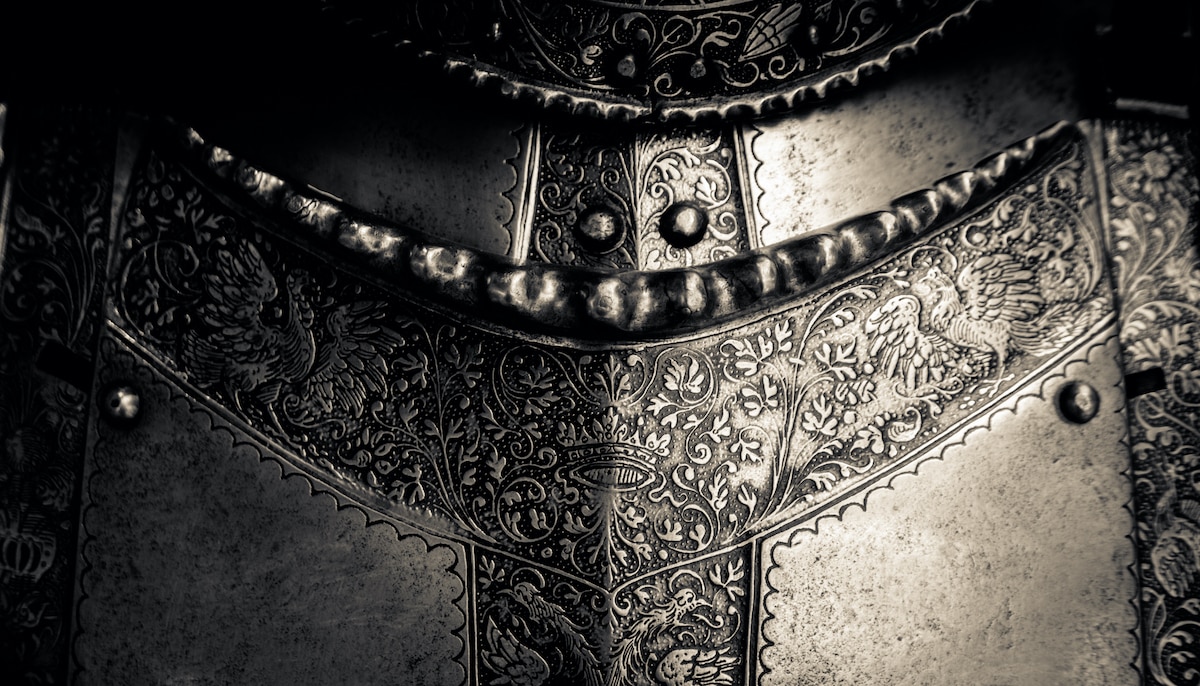 Torso Armor
Torso Armor Bracers and Arm Protection
Bracers and Arm Protection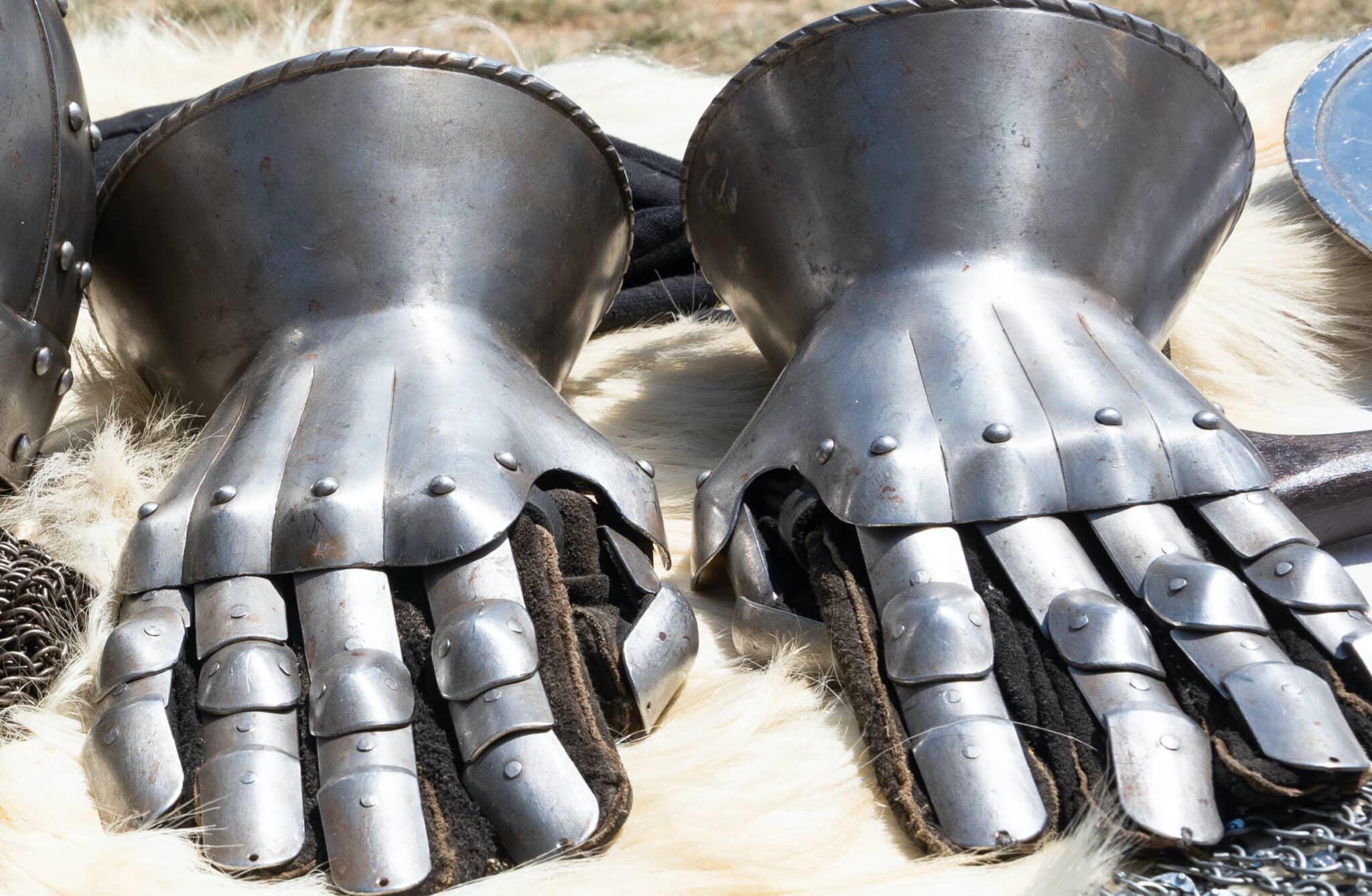 Gauntlets
Gauntlets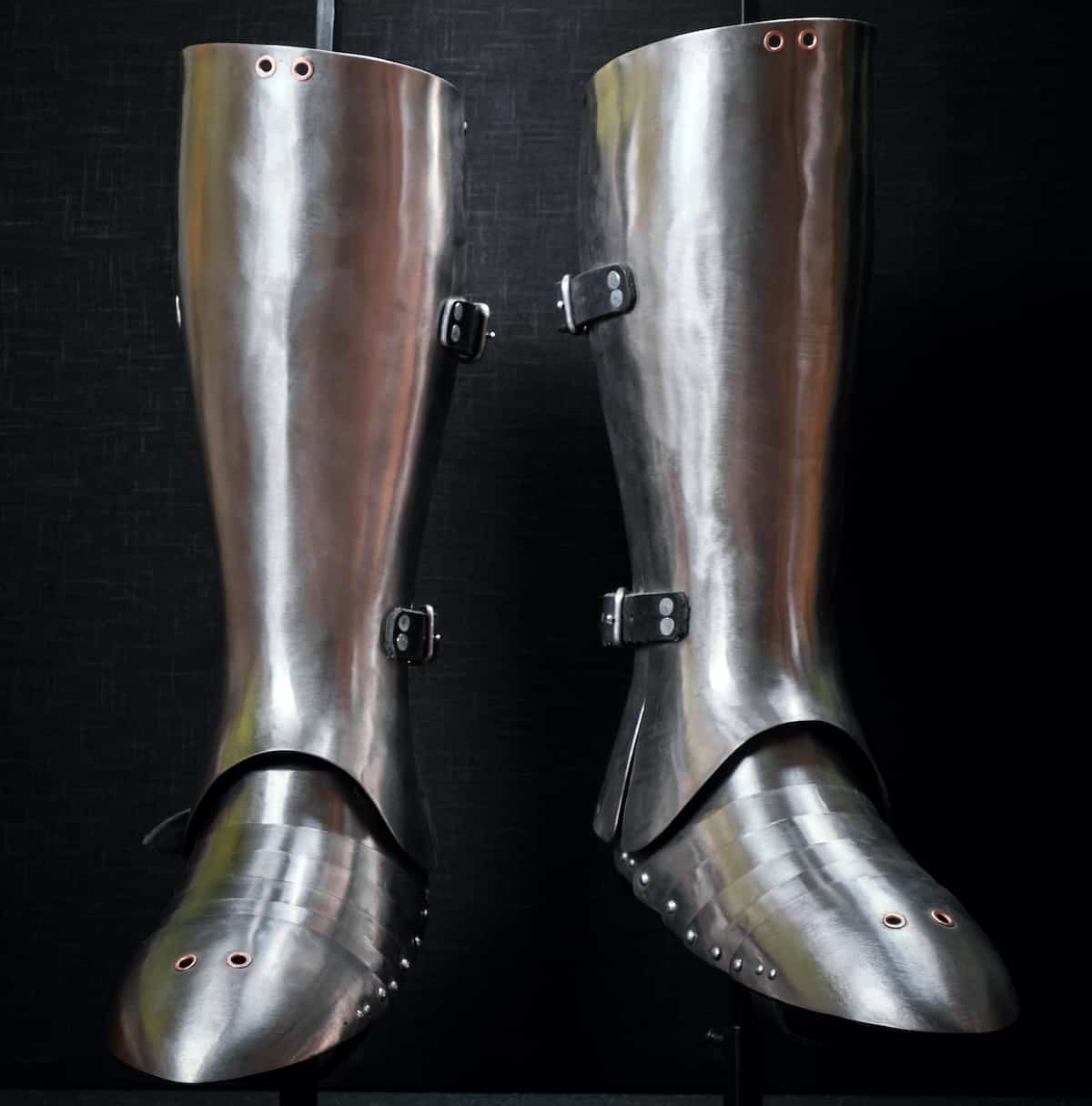 Leg Armor
Leg Armor Cloaks
Cloaks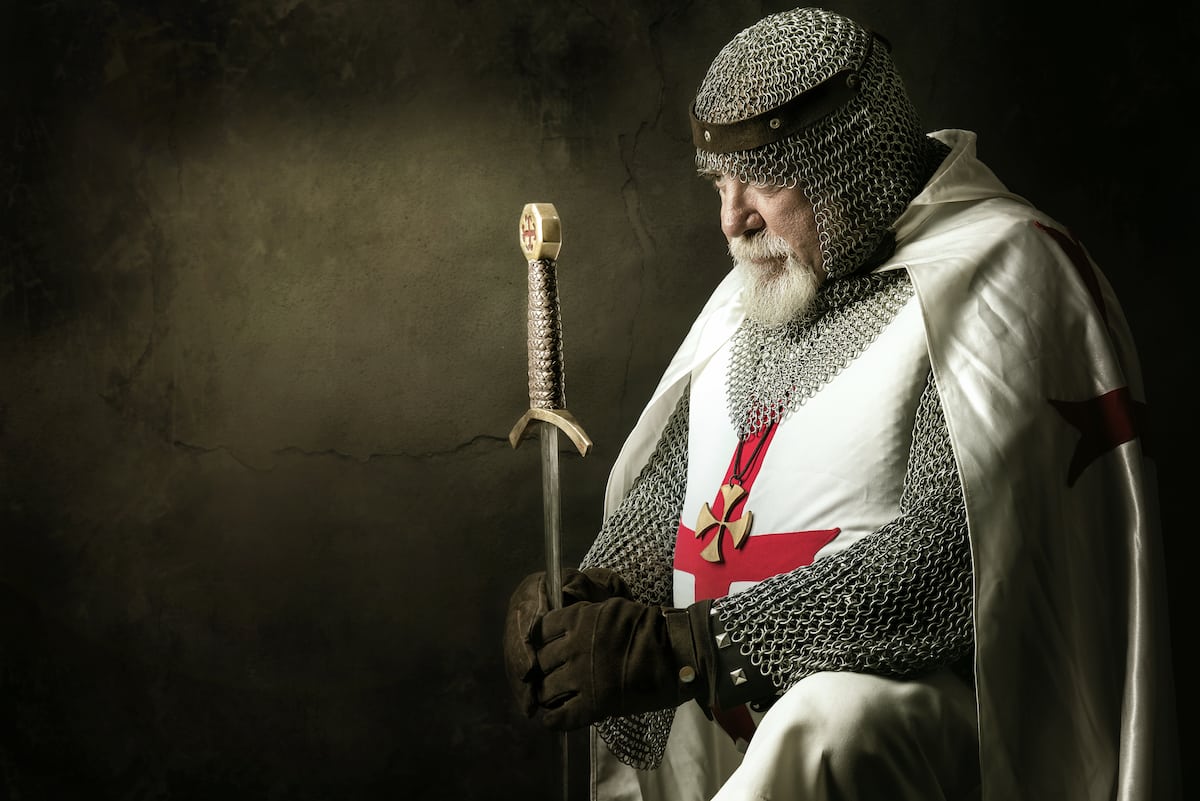 Tabards
Tabards Shirts
Shirts Tunics
Tunics Dresses
Dresses Pants
Pants Gloves
Gloves Belts
Belts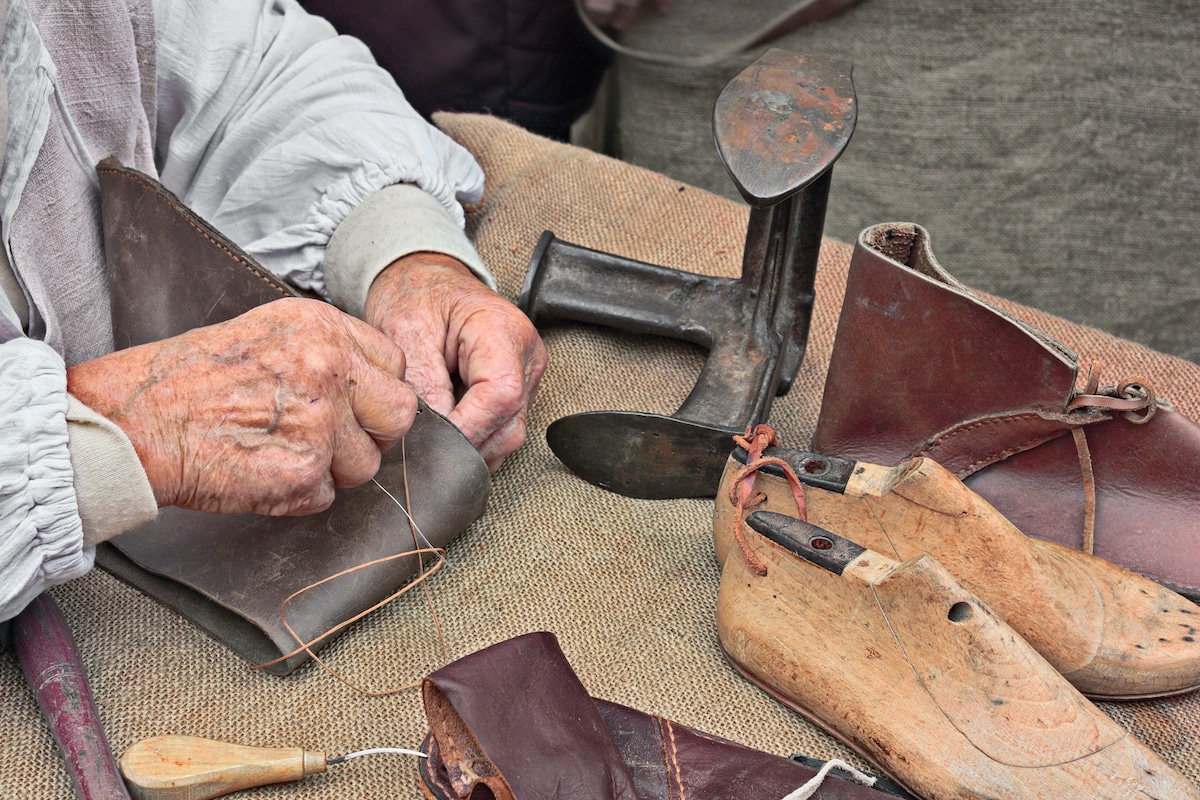 Shoes
Shoes Rings
Rings Necklaces & Pendants
Necklaces & Pendants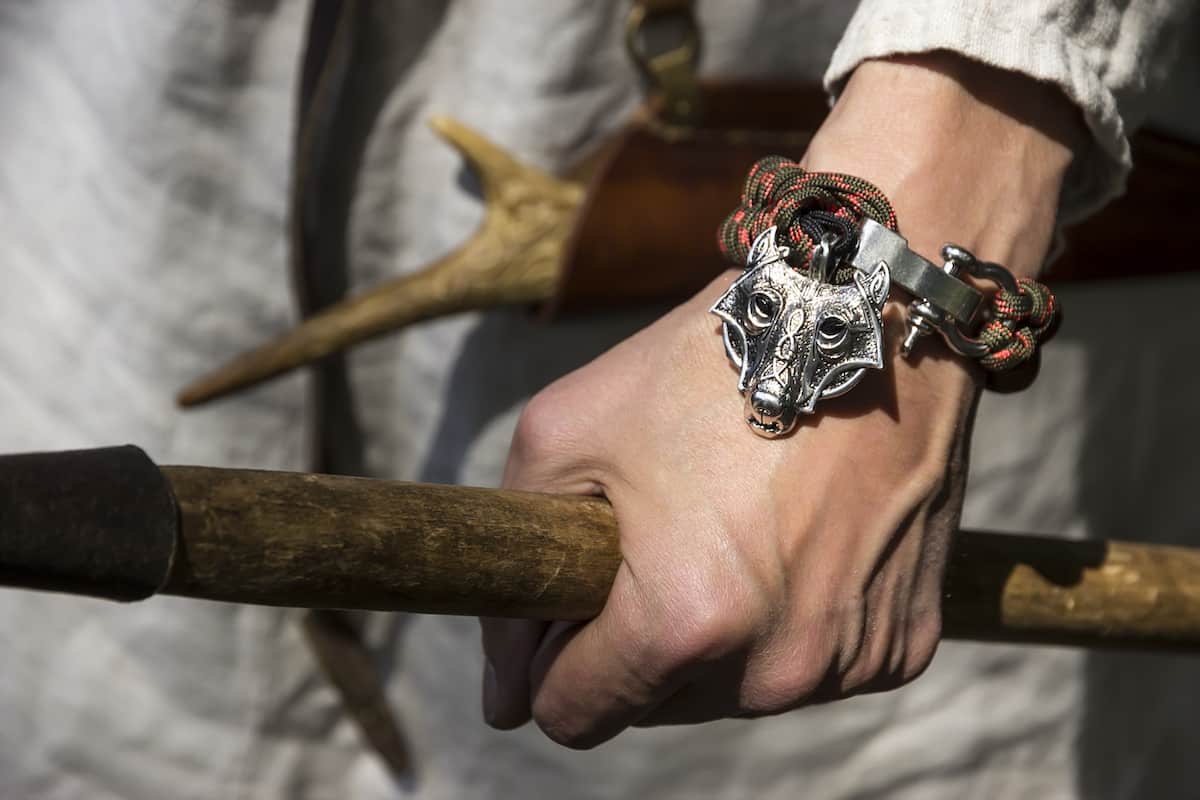 Bracelets
Bracelets


